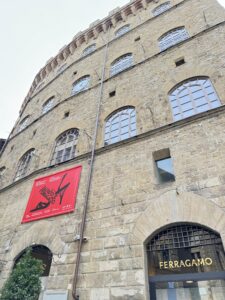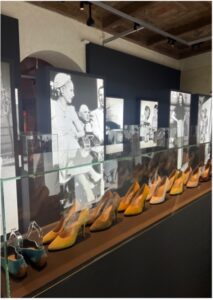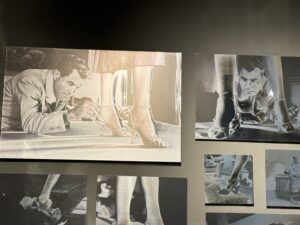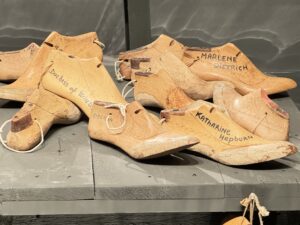The Shoemaker for the Stars
By Sofia-Teresa Di Bacco
On Friday March 16, the Dickinson Mosaic students and professors had the opportunity to visit the Salvatore Ferragamo Museum in Florence, Italy. Throughout this enchanting experience, the group walked through the Salvatore Ferragamo 1898-1960 Exhibition that truly encompassed Salvatore’s life’s work. A hundred years have passed since Salvatore Ferragamo opened his first store in Hollywood in 1923, and to celebrate this special anniversary, this particular exhibit was created in commemoration of his artisanship and creative genius.


In a moment of rebranding and changing the name officially from “Salvatore Ferragamo” to “Ferragamo,” the museum highlights its founder, who was born in Bonito, a little town close to Naples in 1898. Always driven by hard work and the opportunity to chase his dreams as a shoemaker, Salvatore moved to America and became a story of success amongst the most famous Hollywood Stars. Some of these classic celebrities included Marilyn Monroe, Audrey Hepburn, Sophia Loren, and so many more.
Salvatore’s entire life was dedicated to his work, and it became very apparent as we explored the museum. For Salvatore, quality was fundamental, and that is why he moved back to Italy to be surrounded by workers whose goals were to uphold the highest quality of Italian artisanship. In the United States, the production process was extremely industrialized, resulting in poor quality products. But nonetheless, Salvatore was innovative and decided to combine the Italian craftsmanship with the American main element of the Fordist economy. He achieved the best of both worlds by training young and talented Italian artisans to work in an assembly line model, creating an efficient production process, while also keeping true to traditional Italian craftsmanship.
The Museum is truly a testament to not just the artisan that Salvatore was, but also highlighted his success as a businessman. From the room displaying the 368 patents the brand created to solidify Salvatore’s innovations, to the theatre room that shows the modern-day artisans that are caring on his legacy, its entirety is nothing less than mesmerizing. Prioritizing the true core of Made in Italy, Ferragamo asserts that 85% of production takes place in Tuscany, while the rest in other Italian regions. But the most important takeaway may be that unlike other high end Italian brands, Ferragamo stands its ground, continuing to emphasize the importance of a legitimated Made in Italy label. Ultimately, it was indeed breath of fresh air to experience the legitimacy of upholding the highest artisanal standards at the forefront of a brand, however, there were some discrepancies in this history of success. For example, the presence of Mussolini’s mistress and daughter in the celebrities’ room, and the fact that during fascism Salvatore was unable to do business with the Americans, so instead he worked close to the Fascist government and received commissions for the soldiers’ shoes was interesting to uncover. He additionally paid the promissory notes of the Jewish former owner, who was fleeing from Mussolini, for what is currently known as the Ferragamo palace. As we continued to dive deeper and ask our tour guide more and more questions, her answers noticeably allowed the “dark side” of Ferragamo to ironically shine through. In the end, this may make us wonder and bring us to ask a final question: “Is there such a thing as a fashion business without a dark side?”
The following pictures are just small examples from the Ferragamo Museum exhibit on the life and work on Salvatore Ferragamo.



I hope you enjoyed this read and I appreciate you tuning it to all my blogs along this wonderful journey. Thank you very much.